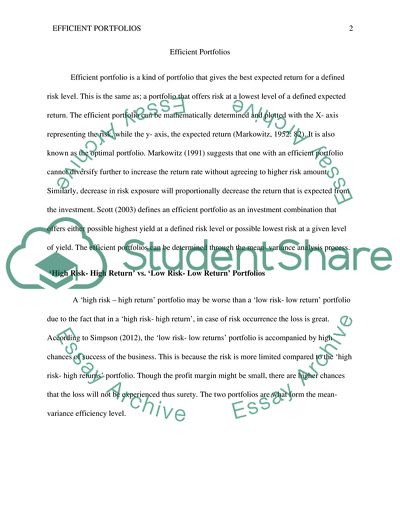Cite this document
(A central assumption made in Mean-Variance Analysis and the Capital Assignment, n.d.)
A central assumption made in Mean-Variance Analysis and the Capital Assignment. https://studentshare.org/finance-accounting/1866003-a-central-assumption-made-in-mean-variance-analysis-and-the-capital-asset-pricing-model-capm-is-that-investors-prefer-to-invest-in-the-most-efficient-portfolios-available
A central assumption made in Mean-Variance Analysis and the Capital Assignment. https://studentshare.org/finance-accounting/1866003-a-central-assumption-made-in-mean-variance-analysis-and-the-capital-asset-pricing-model-capm-is-that-investors-prefer-to-invest-in-the-most-efficient-portfolios-available
(A Central Assumption Made in Mean-Variance Analysis and the Capital Assignment)
A Central Assumption Made in Mean-Variance Analysis and the Capital Assignment. https://studentshare.org/finance-accounting/1866003-a-central-assumption-made-in-mean-variance-analysis-and-the-capital-asset-pricing-model-capm-is-that-investors-prefer-to-invest-in-the-most-efficient-portfolios-available.
A Central Assumption Made in Mean-Variance Analysis and the Capital Assignment. https://studentshare.org/finance-accounting/1866003-a-central-assumption-made-in-mean-variance-analysis-and-the-capital-asset-pricing-model-capm-is-that-investors-prefer-to-invest-in-the-most-efficient-portfolios-available.
“A Central Assumption Made in Mean-Variance Analysis and the Capital Assignment”. https://studentshare.org/finance-accounting/1866003-a-central-assumption-made-in-mean-variance-analysis-and-the-capital-asset-pricing-model-capm-is-that-investors-prefer-to-invest-in-the-most-efficient-portfolios-available.


